During the first week of the Eastern Holidays we spent a few days in the hills around Budapest, looking for early spring beetles.
Under here two images of the hills around Fót.

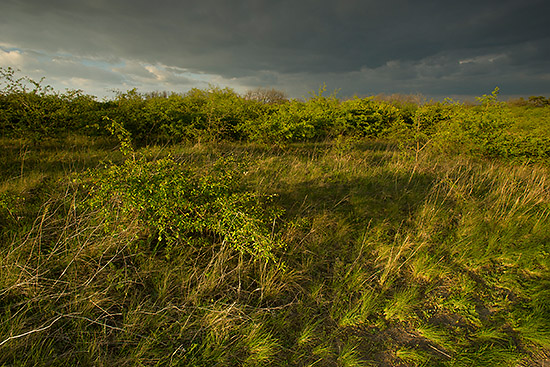
On the first day we were accompanied by Nikola Rahmé, who helped us finding interesting species in the hills North of Budapest. That day, we climbed up a forested hill in Pomáz. In the lower parts of the hills, we regularly ran into a ‘Rose Chafer’ related species: Protaetia cuprea. Several individuals were actively foraging on the flowers of the Wild Cherries. Under here an image of Protaetia cuprea.
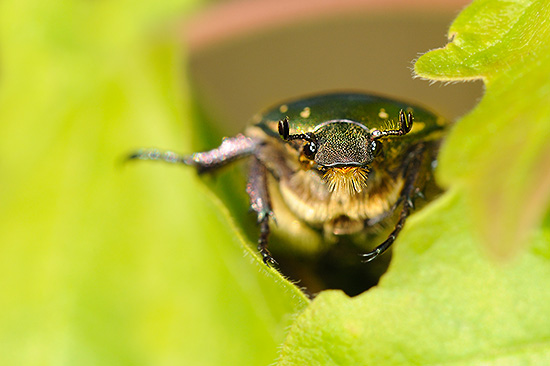
Protaetia cuprea looks very similar to Cetonia aurata, but it has 'whitish knee-patches'. Unlike most of its congeners, the larvae of Protaetia cuprea do not develop in decaying wood in tree cavities, but survives as a host in the nests of Red Wood Ants (Formica rufa).
In the same area, the more common Cetonia aurata was also regularly seen flying by and landing on small trees across the path. Under here, an image of Cetonia aurata.

When we reached the top of the hill (around 1000 metres above sea-level), another flower loving scarab beetle species was very actively swarming around the young oaks and visiting the flowers on the open patches: Hoplia pratensis. When having a closer look, there seemed to be hundreds of them! A lot of the individuals were entirely dim black and another common colour morph had brownish red shields. But the most beautiful individuals had almost silvery coloured scales above their black and brownish body colour. Under here an image of such a lovely coloured individual.
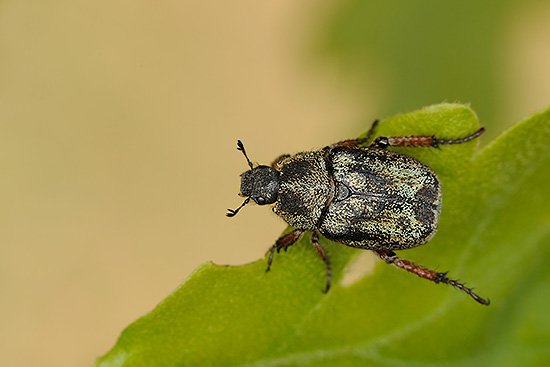
By noon it had warmed up seriously, and the air was buzzing with flies, wasps, bees, moths and beetles. Many of them were visiting the flowers in the open grasslands or were flying to their host trees and shrubs. Whe decided to carefully screen the trees and shrubs for insects and tried some beating of the leaves as well. This technique consists of beating with a stick the branches and holding a white sheet under the beating, so that many of the falling insects will be caught and can easily be found on the white background. Both techniques were successful and revealed many tiny weevil species.
Under here, two images of Caenorhinus interpunctatus.

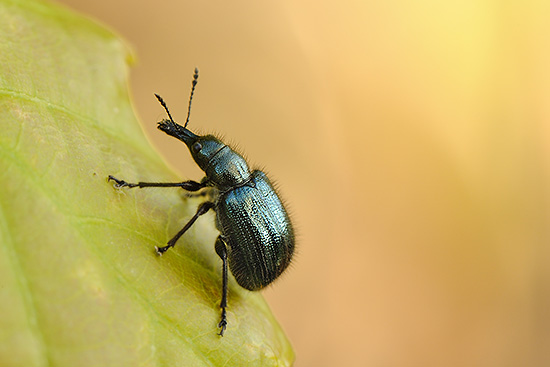
It is a leaf-rolling weevil species mainly found on fruiting trees and members of the Rosaceae. The beetles belongs to the Rhynchitinae, a family of tiny and shiny, often metallic coloured hairy weevils. They develop in fruits, stems, buds, leaves, flowers or leaf rolls. This species was about 4 or 5 mm large.
Another nice beetle which was very common in the oaks on this site, is the Acorn Weevil, Curculio venosus. The genus ‘Curculio’, contains weevils with the longest rostrum, which can even be longer than the rest of the body in females. The larvae develop in the fruits of various broadleaves or in the leaf galls of sawflies and gall wasps, and pupate in the soil. Under here two images of Curculio venosus, one of the bigger members of its genus.
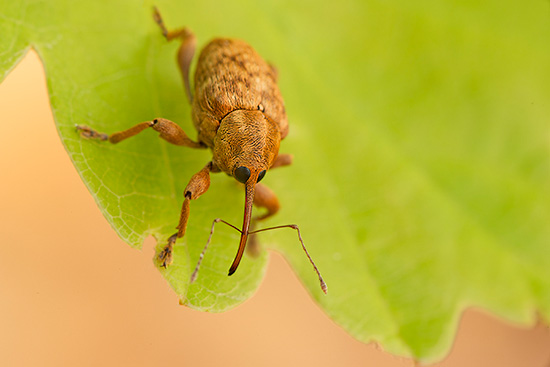

A little later, a little to my surprise, a Calosoma inquisitor fell on the white sheet during the beating. I knew the species could be quite common in some years, but as it is mainly a canopy dwelling species, which is seldom seen in Western Europe, it didn’t really expect to find the species that easily. I started then to screen carefully and slowly the branches of the lower trees and came across two other individuals, who were hidden in the foliage. Under here two images of the Lesser Searcher, Calosoma inquisitor.
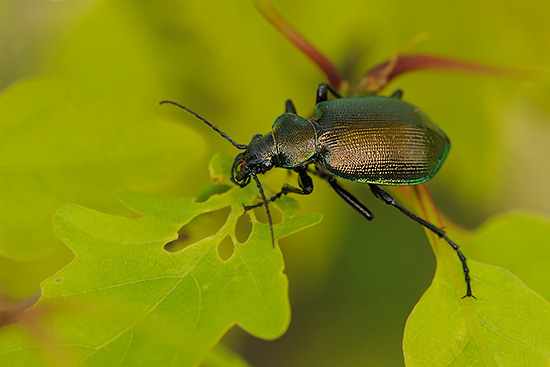

The Lesser Searcher, Calosoma inquisitor, is together with Calosoma sycophanta one of the few predominantly arboreal carabini in Europe. It spends most of his time in the canopy hunting for caterpillars, which is his main prey. Both species are strong flyers and can easily cover significant distances by flying. They are often more abundant in years with caterpillar plagues. From time to time and especially when more abundant, this Calosoma can also be found running on the ground.
The individuals on the image are a greenish coppery colour morph of the Lesser Searcher. This colour form is the one which is most frequently encountered in the hills around Budapest.
I was already very excited about my first Calosoma inquisitor finding ever, but a few moments later Nikola found a blue colour morph! Under here an image of the spectacular blue colour morph. Nikola says it is not uncommon in the hills around Budapest and about one out of five individuals seems to be blue.
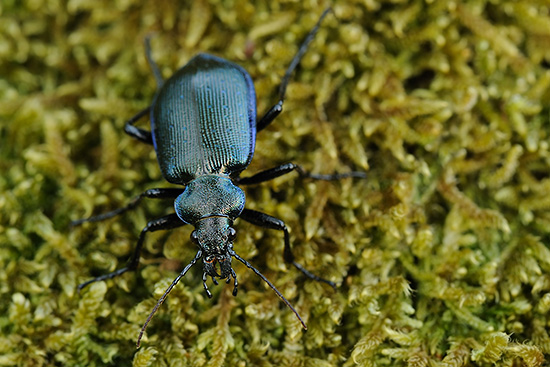
In the grasslands around Csobanka, we saw several Weevils species, of which these two: Otiorhynchus ligustici (first image under here) and Cleonis pigra (second image under here), both common species in Central Europe.
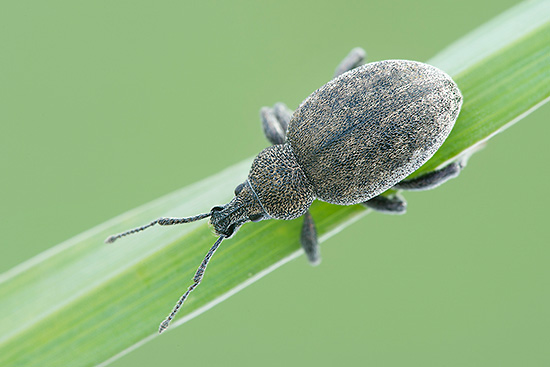
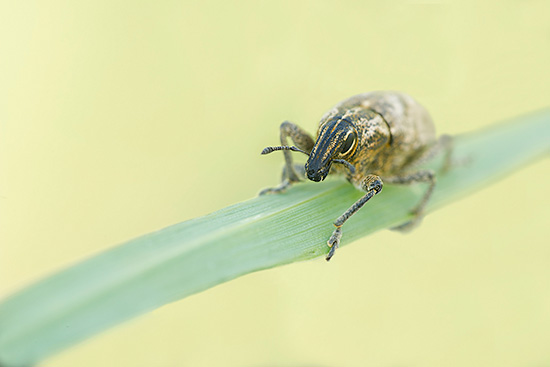
On most of the hills around Budapest two ground dwelling Longhorn Beetles were active: Dorcadion aethiops and Dorcadion pedestre. Both are early spring steppe species, and can be found in the grassy steppe vegetations in the vicinity of Budapest.
Under here, an image of Dorcadion pedestre (image from Pomaz).

Under here, two images from Dorcadion aethiops. Both images were made in Csobanka.
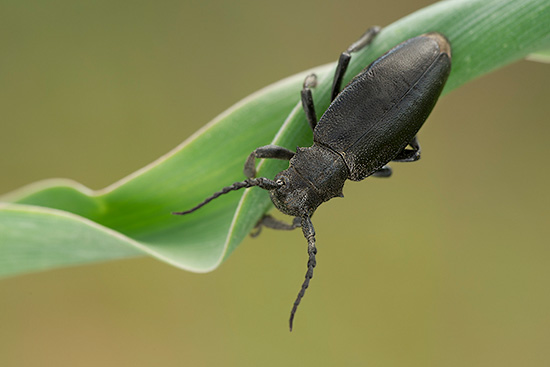

Special thanks to Nikola Rahmé for his pleasant company on our trips in Pomaz and Szentendre and for his very useful information about interesting sites to visit. Without his help many of the images would not have been possible to achieve.
